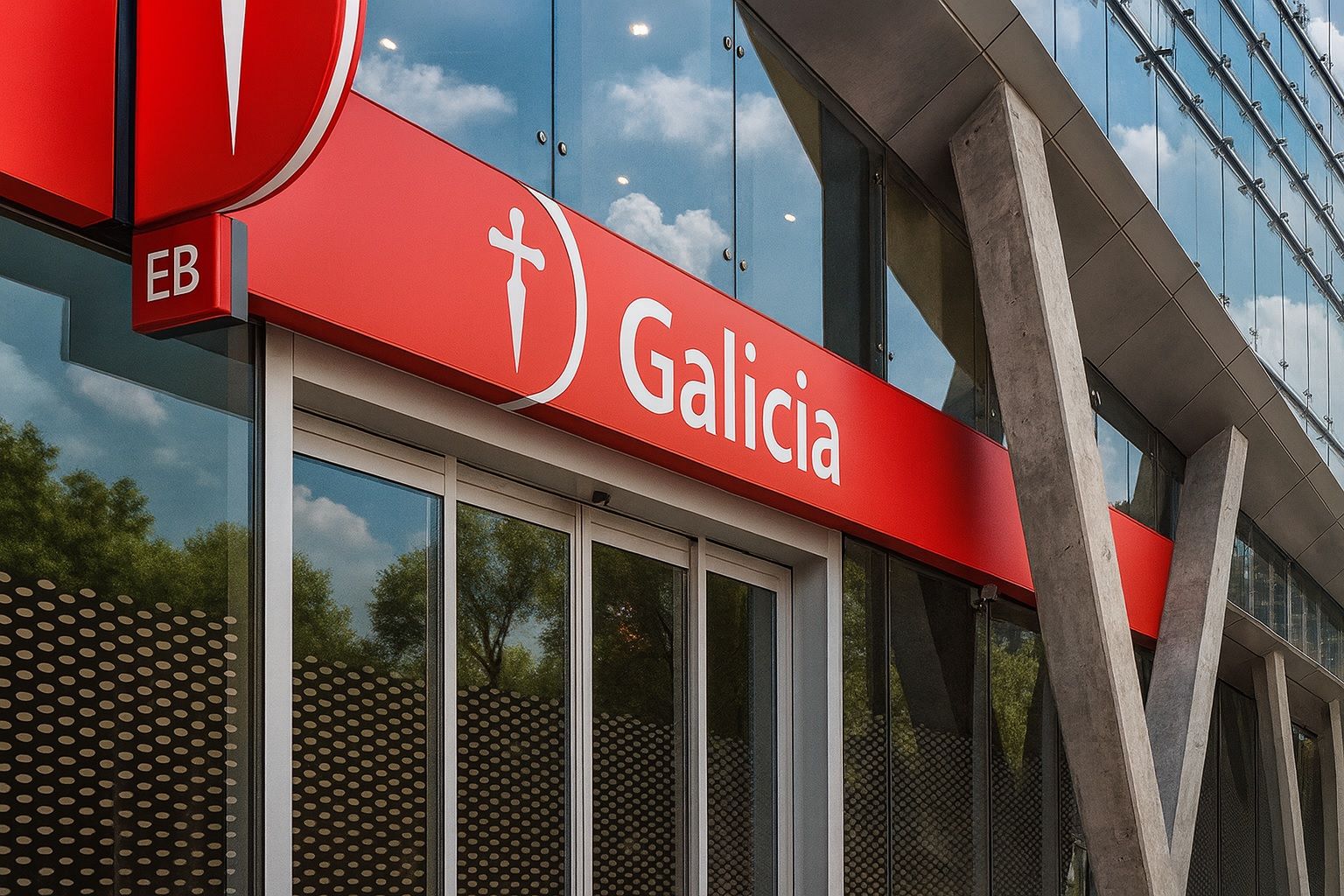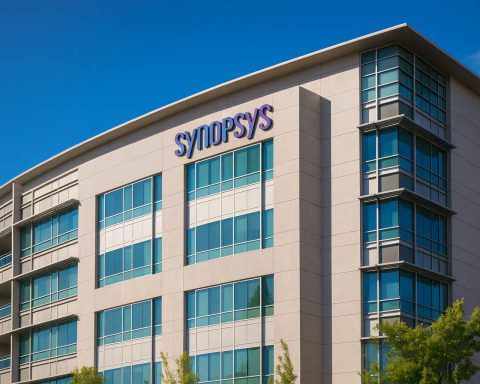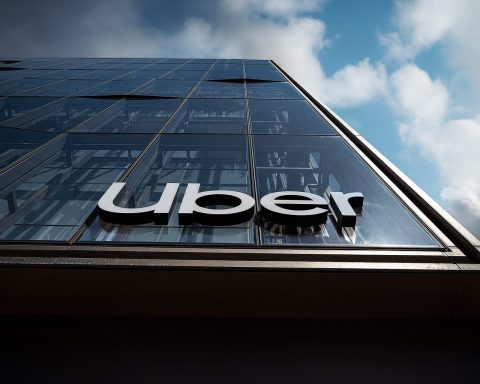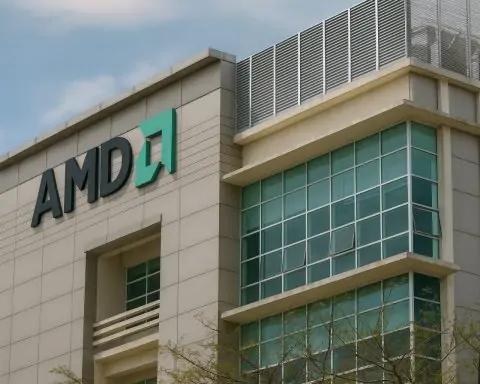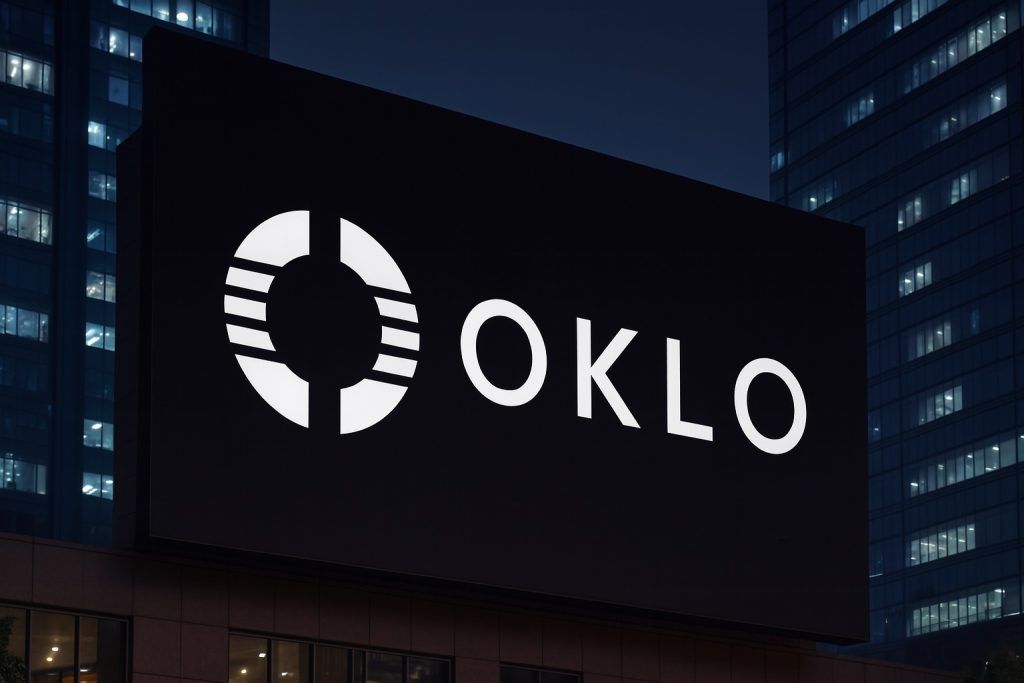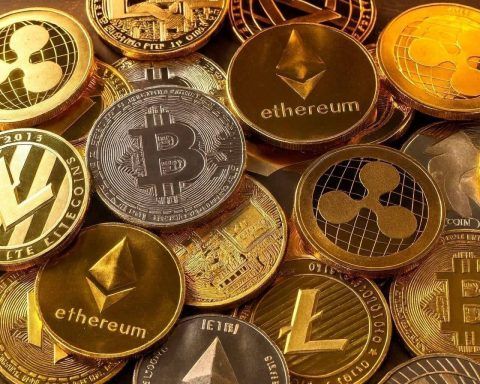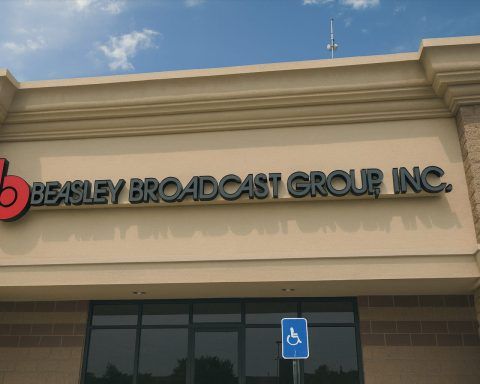- Stock Price (ADR): ~$34.50 per share as of October 10, 2025 [1]. The stock jumped over 21% in a single day on Oct 9, 2025 [2], following major news (details below).
- Market Capitalization: Approximately $4.6–5.5 billion (USD) – making it one of Argentina’s largest private financial institutions [3] [4].
- Industry: Banking & Financial Services (Argentina). GGAL operates a diversified finance business including banking, credit cards, insurance, and digital finance (Naranja X fintech arm) [5]. Revenue is predominantly from its banking segment in Argentina [6].
- Valuation Metrics:P/E ratio ~5–7 (trailing 12 months) – exceptionally low, reflecting either strong earnings or perceived risk [7] [8]. P/B ratio ~1.0 (price near book value ~$36/share) [9] [10]. P/S ratio ~0.5, indicating the stock trades at half of annual sales [11]. These suggest potential undervaluation if the financial outlook stabilizes.
- Recent Performance:52-week range of roughly $25.89 (low) to $74.00 (high) [12] – a volatile ride tied to Argentina’s turbulent economy. The stock is down ~19% from a year ago [13], but has rallied strongly in recent weeks on improving sentiment. Year-to-date in 2025, the ADR had been weak (over –40% by late Q3) before reversing on positive catalysts [14].
- Market Multiples: GGAL’s profit margin is about 11–16% [15] [16], and it carries a modest debt/equity ratio (~0.32) indicating conservative leverage [17]. However, free cash flow is negative in recent metrics (–15% yield) [18], reflecting challenges in cash generation. The beta of ~1.3–1.5 suggests the stock is slightly more volatile than the market [19] [20].
- Analyst Sentiment: Wall Street is broadly bullish. The average 12-month price target is around $64 – nearly double the current price [21] – and recent analyst ratings are Buy/Outperform with high targets (e.g. HSBC $60, Itaú $70, Morgan Stanley $92) [22]. The consensus recommendation is a “Buy” (approx. 1.3 on a 5-point scale, where 1 = Strong Buy) [23].
(All figures USD for ADR unless noted. GGAL is an American Depositary Receipt on Nasdaq, representing shares of Grupo Financiero Galicia S.A., an Argentine company.)
A Rollercoaster Year for GGAL Stock
It’s been a wild 12-month ride for Grupo Financiero Galicia’s stock. In late 2024, GGAL surged to a 52-week high of $74 amid investor euphoria over Argentina’s new pro-market government [24]. In November 2023, libertarian outsider Javier Milei won Argentina’s presidency, sparking hopes of economic reform [25]. International analysts upgraded GGAL aggressively – for example, Morgan Stanley boosted its target to $92 and JPMorgan to $54 as 2024 ended [26]. This optimism propelled the ADR sharply higher into early 2025.
However, the bullish momentum didn’t last. Through the first half of 2025, GGAL tumbled over 40% from its peak [27]. The reality of Argentina’s economic challenges set in: even under Milei’s administration, the country grappled with severe inflation, fiscal deficits, and currency instability. By mid-2025, GGAL’s stock had erased much of its gains – falling to the mid-$20s (its 52-week low ~$25.89) [28]. Weighing on shares were disappointing earnings (a steep year-over-year profit drop) and investor jitters over Argentina’s financial system. Indeed, GGAL’s Q2 2025 net income plunged ~70% year-on-year, indicating the tough environment, even though certain accounting quirks led to an outsized EPS figure in local terms [29].
Inflation and interest rates played a big role in this volatility. At the end of 2023, Argentina’s inflation was a dizzying 211% year-over-year; by mid-2025 it had plunged below 30% [30] [31]. This dramatic disinflation under Milei’s policies created a more stable economic backdrop, aiding banks’ planning and lending. But in the interim, tight monetary measures and a free-floating currency band (set in April 2025) led to sky-high interest rates (30–40%+ in pesos) [32] and stressed consumers. GGAL’s loan growth and profitability were crimped, and investors worried about a potential credit bust or currency devaluation – sending the stock down to nearly $26 by September.
October 2025: A Dramatic Rally on U.S. Support
In late September and early October 2025, GGAL staged an explosive comeback – essentially two back-to-back rallies ignited by news of U.S. intervention to stabilize Argentina’s economy. The turnaround began on September 22, 2025, when the U.S. government signaled a “large and forceful” financial lifeline for Argentina’s troubled markets [33]. In response, Grupo Financiero Galicia’s ADR soared 21.1% in one day (to ~$32.03), snapping a three-day losing streak [34]. Investors cheered as the U.S. Treasury indicated plans to support Argentina’s currency and possibly buy sovereign debt to calm the crisis [35] [36]. The notion that Washington would step in – under U.S. President Donald Trump – gave a much-needed confidence boost. (Notably, President Trump and Argentina’s President Milei were reported to be meeting that week to discuss further measures [37], underscoring the political alliance.)
After that initial burst, GGAL shares pulled back slightly in early October, hovering around the high-$20s. Markets were “hungry for the details” of the U.S. aid and wary that it wasn’t finalized yet [38]. Then came October 9, 2025 – the big bang catalyst: the U.S. Treasury officially finalized a $20 billion currency swap agreement with Argentina’s central bank, and even directly purchased Argentine pesos in the open market [39]. This extraordinary step aimed to shore up the peso and Argentine financial system without calling it an outright “bailout” [40] [41]. Markets responded immediately. On Oct 9, GGAL’s ADR skyrocketed 21.7% in a single session to $34.50 [42] [43]. Argentine stock indices also surged: the Buenos Aires Merval jumped ~5.8%, and the U.S.-traded S&P Argentina ADR Index leapt 13% on the news [44].
This U.S.-Argentina currency swap is a game-changer in the short term. By injecting $20B, the U.S. essentially provided dollar liquidity to Argentina in exchange for pesos – aiming to stabilize the peso’s value and halt capital flight [45] [46]. Treasury Secretary Scott Bessent emphasized it was to restore market equilibrium, “not a bailout” per se [47]. For Argentina’s banks like Galicia, a stronger or steady peso and improved confidence are hugely positive: it eases the risk of a currency collapse that could devastate assets and loans. Indeed, “if [the U.S.] hadn’t come through…we would be talking about a complete collapse of Argentina,” one emerging-markets portfolio manager noted, highlighting how critical this support was [48].
From Oct 9 into Oct 10, 2025, GGAL stock held onto most of its gains around the mid-$30s. As of market close Oct 10, it was roughly $34–35, up ~60% from the lows just weeks prior. This breathtaking rebound shows how sensitive Argentine equities are to policy news. By propping up the peso, the U.S. essentially removed (for now) the worst-case scenario for GGAL – a currency spiraling out of control. The broader political context is notable too: Washington’s aid was seen as bolstering Milei’s reformist government, which aligns ideologically with the U.S. administration [49] [50]. (Analysts even suggested the U.S. aimed to influence Argentine politics by timing support before important local elections in October [51].) Whatever the motive, the immediate effect was clear: confidence returned to Argentine financial assets, and Galicia’s stock ended its downward spiral in dramatic fashion [52] [53].
Financial Health Check: Earnings and Fundamentals
Despite the recent rally, investors are examining GGAL’s fundamentals to judge if this rebound has staying power. Recent financial results have been mixed. In its latest reported quarter (Q2 2025), Grupo Financiero Galicia actually missed Wall Street estimates – posting revenue of $1.17 billion, which was about $332 million below expectations, and earnings per share of $0.79, missing consensus by $0.33 [54]. This came after a streak of strong growth in prior periods. Over the past three years, the company’s revenue grew an impressive ~61.9% (in nominal terms) as Argentina emerged from recession and high inflation [55]. However, earnings have been volatile, dropping ~27% year-over-year recently (though still up over 100% on a three-year basis) [56]. High inflation and currency fluctuations make these figures tricky – banks must constantly adjust loan provisions and translate peso profits into USD for ADR reporting, which can swing earnings wildly. Indeed, one analysis noted Galicia’s net income fell 70% YoY in Q2 2025, even as its reported EPS (in Argentine pesos) appeared to “dramatically exceed” forecasts due to one-time accounting factors [57].
Looking at profitability and balance sheet metrics, Grupo Galicia is fundamentally profitable but not without issues. Its net profit margin stands around 16% [58], which is healthy for a bank, and return on equity (ROE) in Q2 2025 was about 9.5% [59]. ROE is expected to improve toward ~10%+ as economic conditions normalize, according to management’s guidance [60]. The bank’s efficiency ratio (cost-to-income) was ~43% in Q2, indicating solid operational efficiency [61]. On the other hand, free cash flow has been negative recently (FCF yield around –15% [62]), suggesting that in an inflationary environment the bank had to deploy cash (possibly to bolster reserves or cover lending growth). This could be a red flag if not reversed, since banks need positive cash generation to sustain dividends and capital.
Asset quality and capital look stable. Galicia’s loan portfolio is diversified (consumer, corporate, agribusiness, etc.), and about 29% of loans are dollar-denominated which provides a partial hedge against peso depreciation [63]. The debt-to-equity ratio is low (~0.3), reflecting a conservatively levered balance sheet for a bank [64]. In fact, GGAL’s capital adequacy has been a bright spot: as of Q2 2025 the group’s Tier 1 capital ratio (core equity) comfortably exceeded regulatory minimums (though the exact figure isn’t cited here, the low D/E implies robust capital buffers). Asset quality metrics were not directly provided, but given the high inflation, real credit losses have been manageable so far – likely thanks to prudent provisioning and the economic rebound in 2024–25 (GDP grew ~4.7% in 2024 and is projected ~3–5% in 2025) [65].
The company also resumed shareholder payouts, signaling confidence. In October 2025, Grupo Galicia announced a cash dividend to shareholders, payable Oct 13, 2025 [66] [67]. (The dividend amount was declared in Argentine pesos, reflecting the company’s earnings in local currency.) While the dividend yield is modest (~2% annualized) [68], the fact that Galicia is paying dividends again is a positive sign of financial stability. It suggests management is comfortable with the bank’s capital position and liquidity, even amid Argentina’s challenges.
Valuation-wise, GGAL looks cheap on paper. The ADR’s price-to-earnings ratio around 5–7 is far below global bank averages [69]. Even on a forward P/E (looking to next year’s earnings), it’s only ~5.8 [70], implying investors are pricing in a lot of risk. The price-to-book ratio ~0.95 means the stock trades just under its accounting book value [71] – a level usually seen in distressed or very low-growth banking markets. For context, large U.S. or global banks often trade at 1.0–1.5 times book in normal conditions, and emerging-market banks can be even higher, so <1x book signals skepticism. The price-to-sales ~0.46 is likewise very low [72]. These low multiples partly reflect Argentina’s country risk (high inflation, capital controls, default risk) and the uncertainty of future earnings (which depend on the peso’s stability). But if Argentina’s economy truly turns a corner, there could be a case that GGAL is deeply undervalued. Notably, the P/E adjusted for inflation (real earnings power) might be higher than it looks, as banks in high inflation book large nominal profits that may not translate to real value. Still, even a P/E in the high single digits would be inexpensive given GGAL’s market position.
Analyst Views and Expert Commentary
Wall Street analysts have taken notice of GGAL’s situation – and many are optimistic. On September 30, 2025, HSBC initiated coverage on Grupo Financiero Galicia with a “Buy” rating and a bold $60 price target [73]. Analyst Carlos Gomez-Lopez of HSBC highlighted that GGAL is “one of the largest private financial groups in Argentina,” with leading market positions in banking, insurance, asset management, and consumer finance [74]. In other words, HSBC sees Galicia as a dominant player poised to benefit if Argentina’s economy improves. Importantly, HSBC’s $60 target (set just before the U.S. swap news) suggested 123% upside from the stock’s late-September price [75] – a reflection of how undervalued they believed GGAL was. This bullish stance came despite the weak Q2 earnings, showing HSBC’s longer-term conviction that conditions will turn around [76]. The bank effectively urged investors to look past short-term earnings misses, focusing on GGAL’s franchise strength in an eventual recovery.
HSBC is not alone. Multiple analysts have upgraded GGAL in the past year. In May 2025, Brazil’s Itaú BBA initiated coverage at “Outperform” with a $70 target [77], and back in Dec 2024 – at the height of Milei-mania – Morgan Stanley had upgraded GGAL to “Overweight” with a $92 target price [78]. (Morgan Stanley’s target was extremely bullish, presumably banking on a full economic turnaround.) Even J.P. Morgan and Bank of America raised their views in 2024, as GGAL’s prospects improved with regime change [79]. The average of recent price targets sits in the mid-$60s [80], indicating significant upside potential if Argentina’s trajectory normalizes. According to Finviz data, the consensus recommendation score is about 1.3 out of 5 (with 1.0 being a strong buy) [81] – in other words, a “Strong Buy” consensus. This bullish sentiment reflects that professional analysts see Galicia’s risk/reward as favorable at current prices.
That said, expert commentary also carries notes of caution, particularly regarding the macroeconomic risks. The massive U.S. support package received mixed reviews from market strategists. Marc Chandler, Chief Market Strategist at Bannockburn, argued that the U.S. is providing this swap line for “ideological reasons” – essentially to prop up an ally – and warned it might simply be delaying a needed reckoning for the peso [82] [83]. “What we’re trying to do is give them enough money so it can stabilize the peso until after this month’s elections…The way this is structured I’m afraid it might be a long time before we get the dollars back because the peso…is overvalued,” Chandler said, suggesting the peso could eventually sink and make repayment of the U.S. funds difficult [84] [85]. In plainer terms, artificially supporting a currency can lead to pent-up devaluation pressure – a risk for GGAL investors to keep in mind. Another analyst, Juan Perez of Monex USA, noted that the aid “makes sense…to alleviate the financial crisis” and aligns with the U.S. agenda, but he also questioned President Milei’s ability to get things done, given that “his popularity and effectiveness seem to be waning.” [86]. If Milei struggles or loses public support, the reform momentum could stall – again a potential downside for Galicia’s long-term outlook.
On the more positive side, Emerging Markets fund managers seem relieved by the U.S. intervention. “You can see less volatility every day and something more normal,” said Eduardo Ordoñez Bueso of BankInvest, adding that without the U.S. promise, “we would be talking about a complete collapse of Argentina.” [87] This implies that a worst-case scenario (hyperinflationary meltdown) has been averted for now, which underpins the bull case for Argentine banks. GuruFocus analysts also point out that Galicia’s valuation is appealing: with a P/E around 7 and P/B near 1, the stock looks “relatively low compared to historical ranges, suggesting potential undervaluation.” [88] They note that the recommendation score of ~1.8 (from analysts) indicates a moderate buy, and technical indicators like RSI ~56 show the stock is neither overbought nor oversold at these levels [89]. In summary, the expert take is: GGAL has huge upside if Argentina’s stabilization holds, but significant macro risks remain.
Outlook and Forecast: Volatility in the Short Term, Promise in the Long Term?
Short-Term (Next few weeks to months): Caution is warranted in the immediate term, as GGAL’s breathtaking rally may pause or even retrace once the initial euphoria fades. Technical forecasts suggest the stock could consolidate around the low-to-mid $30s near-term. In fact, some algorithmic predictions see GGAL dipping slightly in the coming days after the 20% pop (with a 5-day target around $30–31) [90] [91]. This reflects a market that may have jumped a bit ahead of fundamentals – a classic “buy the rumor, sell the news” scenario. With Argentina’s markets actually closed on Friday, Oct 10 (the day after the swap news) [92], traders had a weekend to digest the information, which could introduce some Monday volatility. We might see profit-taking on the recent gains, especially if any skepticism grows about the implementation of the U.S. support plan. Additionally, Argentina is not out of the woods: there are elections in October 2025 (reportedly some local or mid-term elections) which could stir uncertainty [93]. Any sign of political instability or friction between Milei’s government and the U.S. could spook investors. On the flip side, short-term momentum is clearly upward; dips could attract buyers who missed the rally, given the stock is still well below analysts’ targets. The Fear & Greed Index is in “Fear” territory (around 39) [94], which paradoxically can be bullish if it means many investors remain cautious – there might be “fuel” in the form of sidelined cash if confidence continues to build.
One near-term factor to watch is the Argentine peso’s behavior. Thanks to the U.S. Treasury’s actions, the peso strengthened in the immediate aftermath – it was last quoted around ARS 1,418 per USD (just before markets closed on Oct 9) [95]. If the peso holds stable or even gains in value in the coming weeks, that’s a positive signal that the intervention is working, likely boosting GGAL further. However, any renewed slide in the peso would be a warning sign. Currency traders know that $20 billion, while significant, is not unlimited – if Argentine policy missteps or global conditions cause renewed pressure, the market could “challenge” the peso’s new line in the sand, forcing authorities to spend reserves rapidly. In the short run, expect GGAL’s stock to trade in close tandem with news on the currency and inflation. Any indication that monthly inflation is flaring up again (after being tamed to ~1.5–2% per month through mid-2025) [96] or that capital flight from Argentina is resuming could cap the stock’s upside. Conversely, if upcoming economic data show Argentina’s inflation continuing to fall to multi-decade lows – recent reports put year-over-year inflation around 33%, the lowest in 5 years [97] – it could build confidence that Milei’s orthodox policies are gaining traction, which would favor GGAL.
Long-Term (6–24 months and beyond): The longer-term outlook for Grupo Financiero Galicia hinges on whether Argentina can achieve a sustained economic turnaround and navigate its debt and currency issues successfully. On one hand, there is tremendous upside potential. If President Milei’s free-market reforms (e.g. deregulation, spending cuts, a potential move toward dollarization of the economy) bear fruit, Argentina could enter a period of relative stability and growth. In such a scenario, Galicia stands to benefit enormously: credit demand would rise, loan defaults would fall, and international investors might re-rate Argentine equities closer to normal valuations. It’s not unthinkable that GGAL’s stock could approach the price targets in the $60–$70+ range that analysts have set [98], especially if earnings recover strongly. Remember, GGAL traded above $70 as recently as late 2024 [99] when optimism was high. A return to those levels would mean doubling from the current price – which is precisely what the consensus 12- to 18-month forecast implies [100]. Bulls also point out that Argentine stocks, including GGAL, are still well below their all-time highs of the late 2010s. (Before Argentina’s 2018-2020 crisis, Grupo Galicia’s ADR traded around $70–$80; it then crumpled to single-digits by 2020. The recovery since 2021 has been substantial but remains incomplete.) Long-term investors betting on an Argentina revival see GGAL as a top choice due to its market leadership and diversified financial platform.
However, risks in the long run are impossible to ignore. First and foremost is currency risk. Even with the U.S. swap line, the Argentine peso could face devaluation in the coming years. The current support is aimed to stabilize the peso through the election period and perhaps into 2026 [101], but it’s not a permanent fix. Should Argentina fail to bolster its reserves or if inflation starts rising, the peso might eventually slide beyond the controlled bands – especially once the U.S. assistance program winds down. A significant devaluation would directly hurt GGAL’s ADR (since the ADR price in USD would drop to reflect a weaker peso-valued equity). Some strategists caution that by propping up an “overvalued” peso now, authorities might be “postponing the pain”, which could result in a sharper correction later [102] [103]. Long-term shareholders must be prepared for that scenario – potentially mitigated if Galicia continues growing its USD-based assets or if Argentina manages a smooth transition to a steadier currency regime (e.g., a currency board or dollarization, as has been debated).
Another risk is political and policy continuity. Argentina’s reform path is still young, and public patience can be fickle. Milei’s administration has enjoyed some success (dramatically lowering inflation from over 200% to ~30% in less than two years [104] [105]), but such austerity-driven improvement often comes with economic pain (job losses, high interest rates). By 2026 or 2027, if living standards don’t markedly improve, Argentina could see political swings or a return to populist policies. Any severe policy reversal – for instance, re-imposition of strict currency controls, bank regulations capping profits, or unpredictable tax changes – would undermine the bullish case for GGAL. Investors should watch Argentina’s debt negotiations as well; the country has a history of sovereign defaults and is likely in talks with the IMF or bondholders to roll over obligations. A debt crisis flare-up could quickly sour sentiment.
In sum, Grupo Financiero Galicia’s stock presents a high-risk, high-reward profile as we head into 2026. In the short term, the stock’s fate will track the success of the U.S.-backed stabilization – any stumble could mean volatility, but right now momentum is positive. Longer-term, if Argentina’s economy continues on a reformist, stabilization path, GGAL could be one of the big winners, given its leading position and currently depressed valuation. As one market observer put it during the recent rally, “we’re seeing the thrill of potential gains” [106] return to Argentina’s market after a long drought. But with that thrill comes the need for caution: the road to sustained recovery is far from guaranteed. Investors considering GGAL should keep one eye on Buenos Aires and one eye on Washington – the interplay of Argentine policy and U.S. support will likely dictate where this stock goes next.
Sources: Recent market data and financials from Nasdaq, Finviz and company reports [107] [108]; news and analysis from GuruFocus [109] [110], Reuters [111] [112], Insider Monkey [113] [114], and Investing.com [115] [116]; macroeconomic context from BBVA Research and official Argentine statistics [117] [118]. All information is current as of Oct 10, 2025.
References
1. www.timothysykes.com, 2. www.timothysykes.com, 3. www.gurufocus.com, 4. finviz.com, 5. www.gurufocus.com, 6. www.gurufocus.com, 7. www.gurufocus.com, 8. finviz.com, 9. www.timothysykes.com, 10. finviz.com, 11. finviz.com, 12. finviz.com, 13. finviz.com, 14. finviz.com, 15. www.gurufocus.com, 16. finviz.com, 17. www.gurufocus.com, 18. www.gurufocus.com, 19. www.gurufocus.com, 20. finviz.com, 21. finviz.com, 22. finviz.com, 23. finviz.com, 24. finviz.com, 25. www.europarl.europa.eu, 26. finviz.com, 27. finviz.com, 28. finviz.com, 29. uk.investing.com, 30. uk.investing.com, 31. www.oecd.org, 32. www.insidermonkey.com, 33. www.insidermonkey.com, 34. www.insidermonkey.com, 35. www.insidermonkey.com, 36. www.insidermonkey.com, 37. www.insidermonkey.com, 38. www.reuters.com, 39. www.reuters.com, 40. www.gurufocus.com, 41. www.gurufocus.com, 42. www.gurufocus.com, 43. www.gurufocus.com, 44. www.gurufocus.com, 45. www.reuters.com, 46. www.reuters.com, 47. www.gurufocus.com, 48. www.reuters.com, 49. www.reuters.com, 50. www.reuters.com, 51. www.reuters.com, 52. www.insidermonkey.com, 53. www.gurufocus.com, 54. www.insidermonkey.com, 55. www.gurufocus.com, 56. www.gurufocus.com, 57. uk.investing.com, 58. www.gurufocus.com, 59. uk.investing.com, 60. uk.investing.com, 61. uk.investing.com, 62. www.gurufocus.com, 63. uk.investing.com, 64. www.gurufocus.com, 65. uk.investing.com, 66. www.marketscreener.com, 67. www.marketscreener.com, 68. finviz.com, 69. finviz.com, 70. finviz.com, 71. finviz.com, 72. finviz.com, 73. www.insidermonkey.com, 74. www.insidermonkey.com, 75. www.insidermonkey.com, 76. www.insidermonkey.com, 77. finviz.com, 78. finviz.com, 79. finviz.com, 80. finviz.com, 81. finviz.com, 82. www.reuters.com, 83. www.reuters.com, 84. www.reuters.com, 85. www.reuters.com, 86. www.reuters.com, 87. www.reuters.com, 88. www.gurufocus.com, 89. www.gurufocus.com, 90. coincodex.com, 91. coincodex.com, 92. www.reuters.com, 93. www.reuters.com, 94. coincodex.com, 95. www.reuters.com, 96. www.bbvaresearch.com, 97. www.bcra.gob.ar, 98. finviz.com, 99. finviz.com, 100. finviz.com, 101. www.reuters.com, 102. www.reuters.com, 103. www.reuters.com, 104. uk.investing.com, 105. www.oecd.org, 106. www.timothysykes.com, 107. finviz.com, 108. finviz.com, 109. www.gurufocus.com, 110. www.gurufocus.com, 111. www.reuters.com, 112. www.reuters.com, 113. www.insidermonkey.com, 114. www.insidermonkey.com, 115. uk.investing.com, 116. uk.investing.com, 117. uk.investing.com, 118. www.bcra.gob.ar
